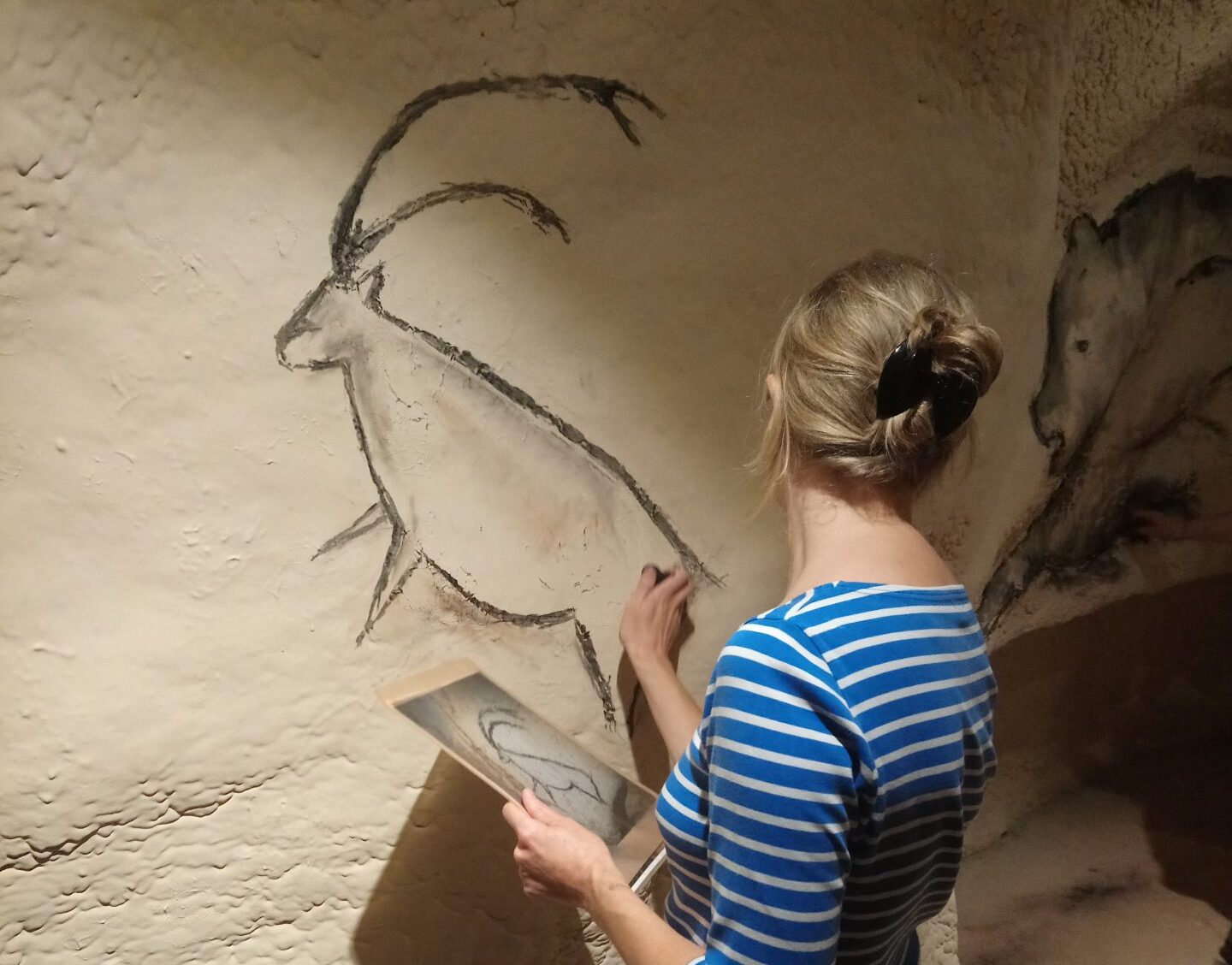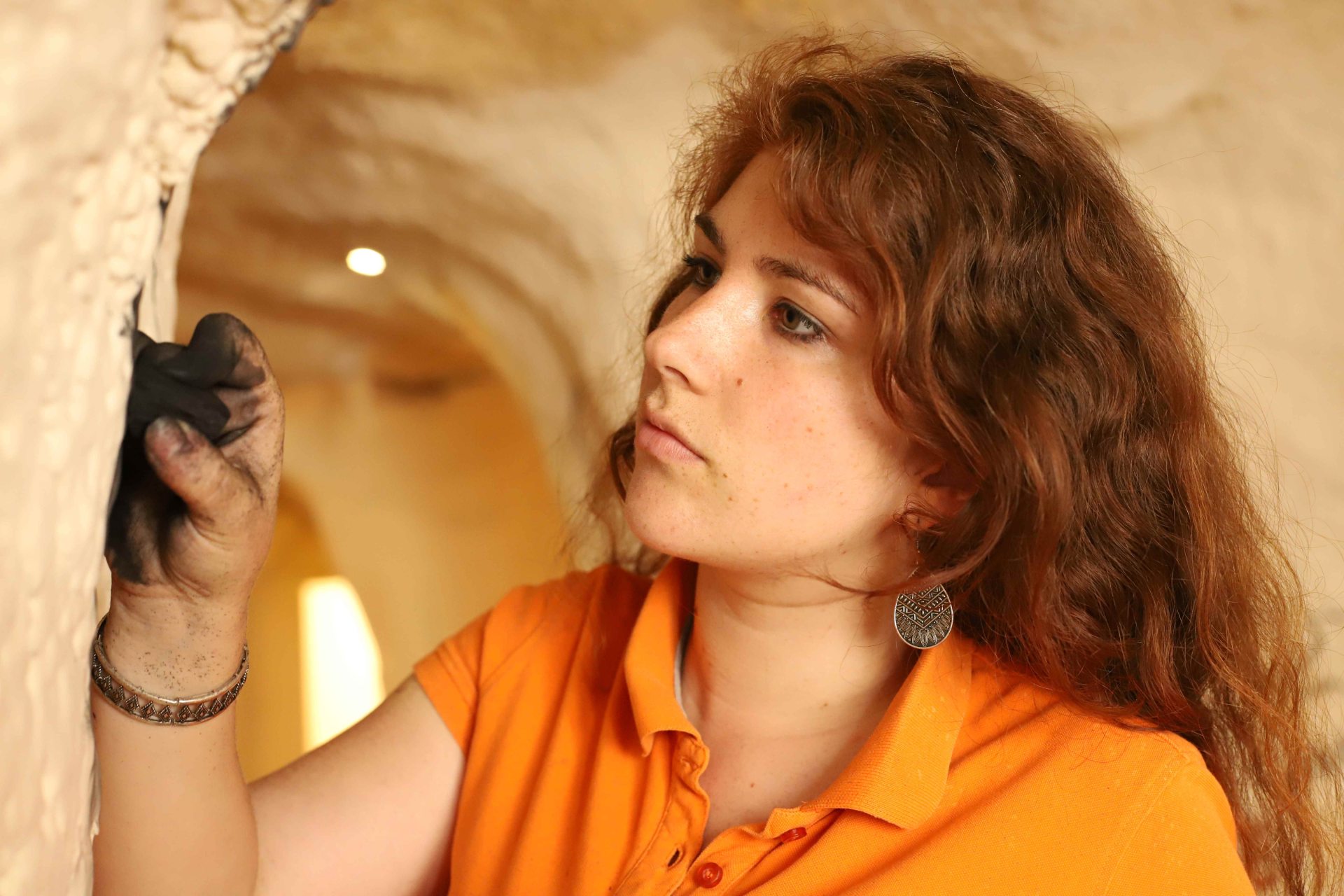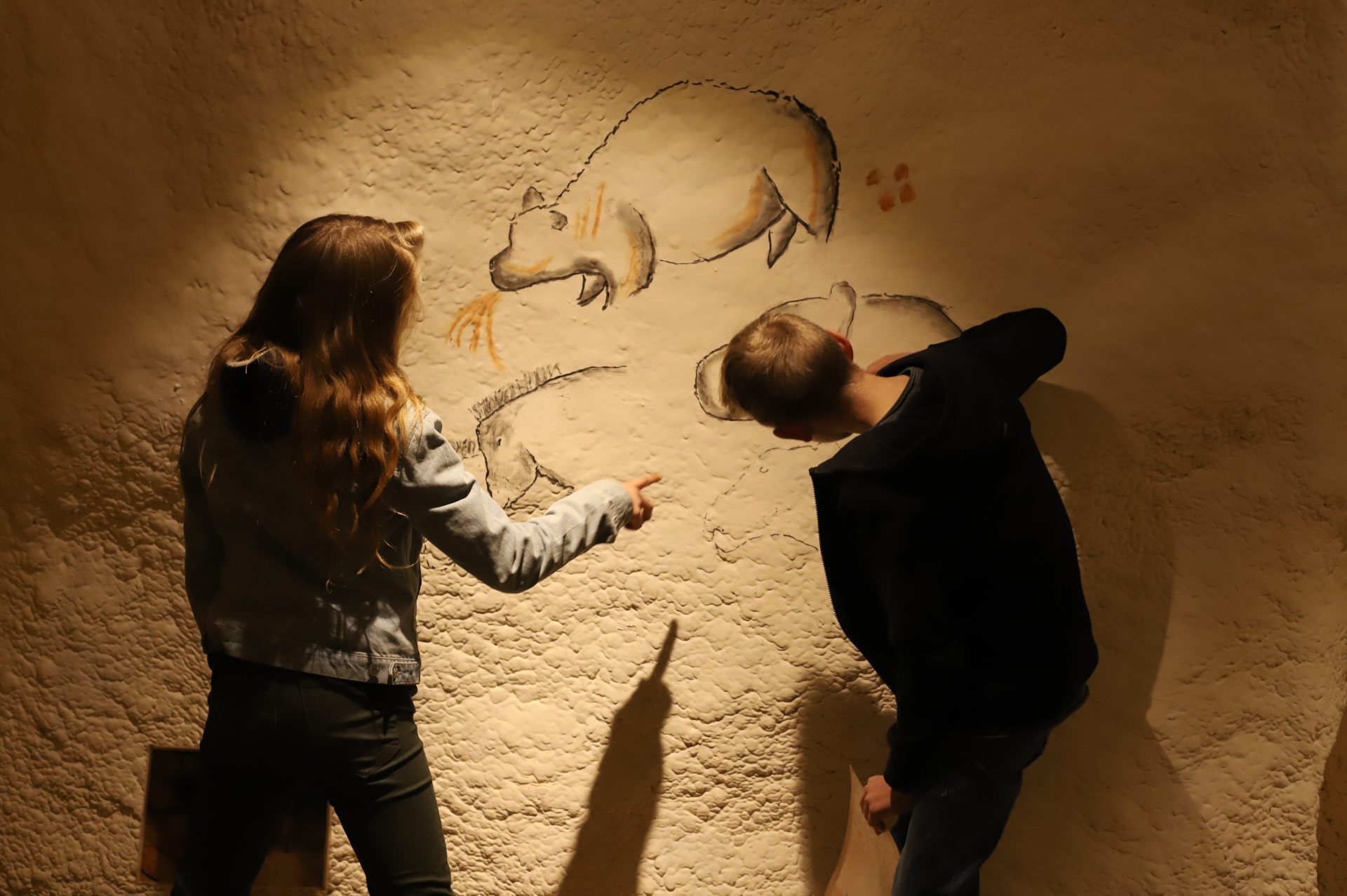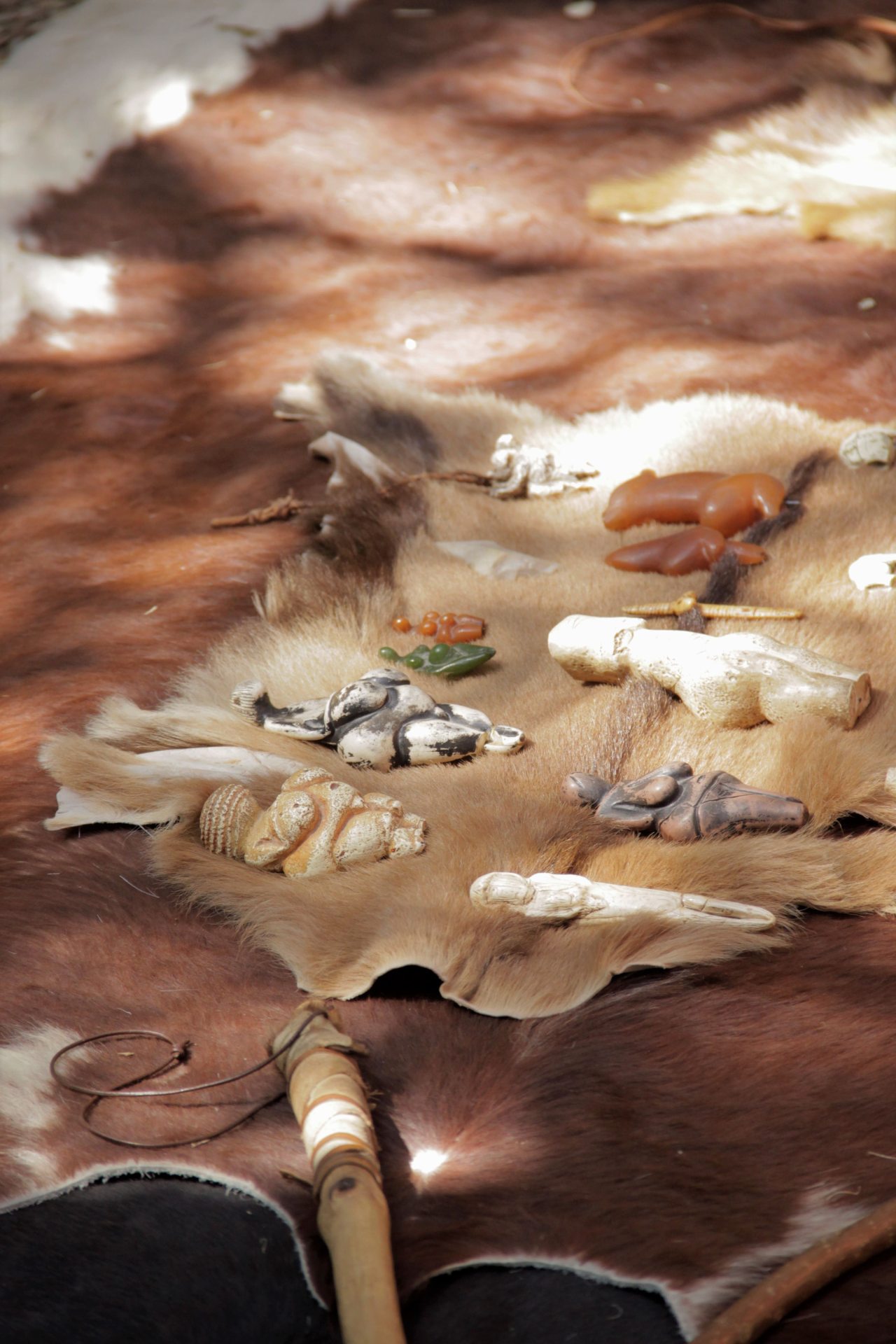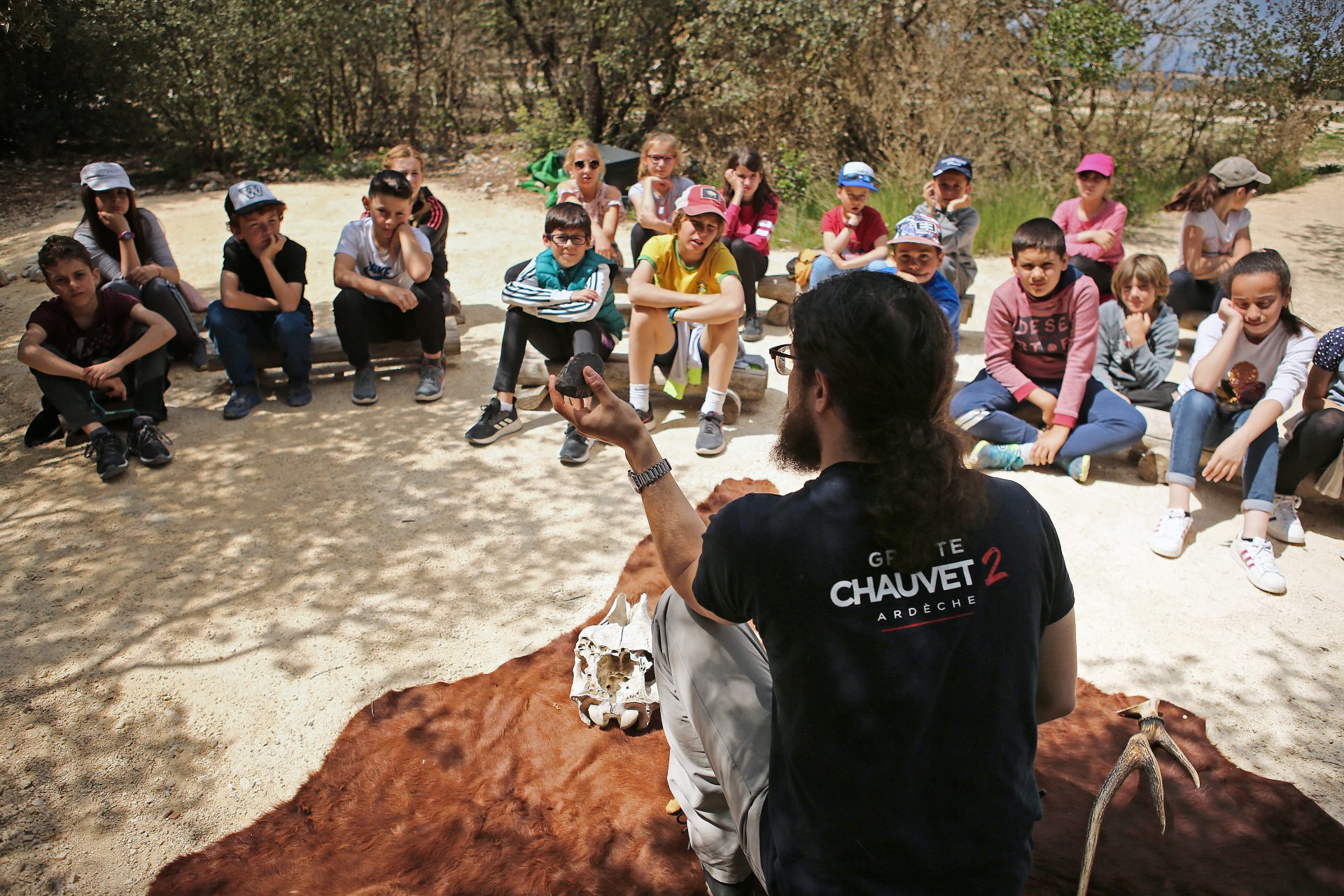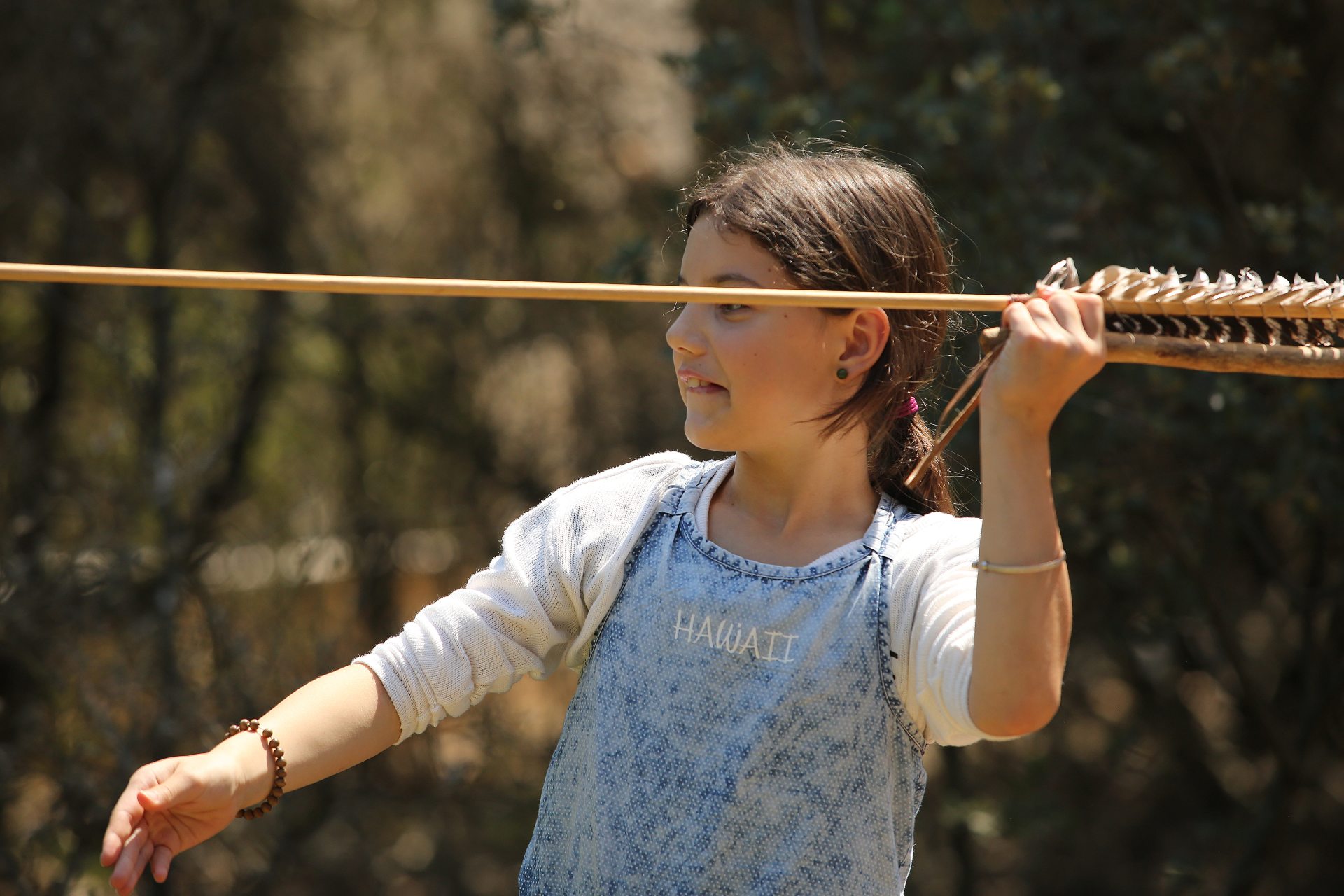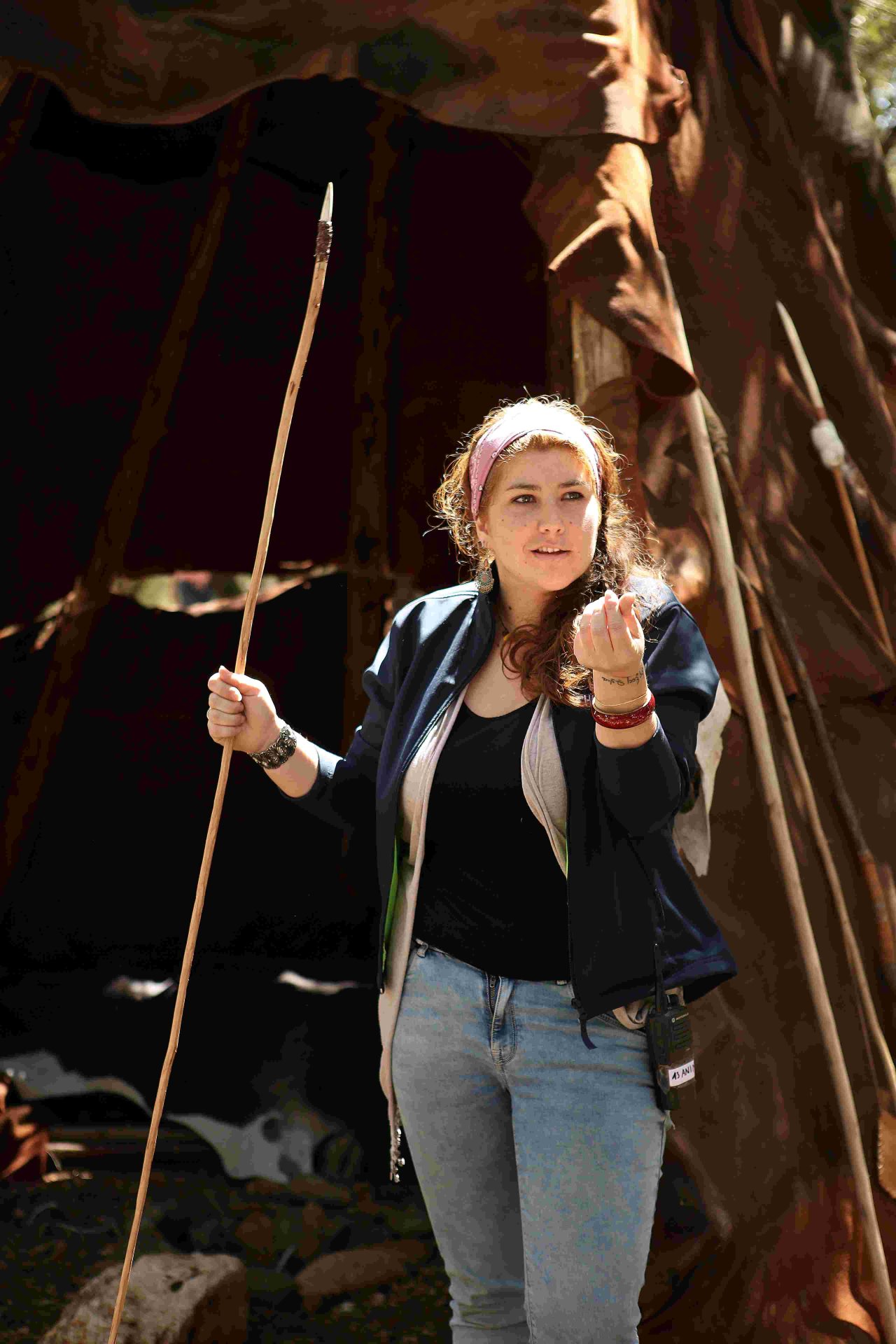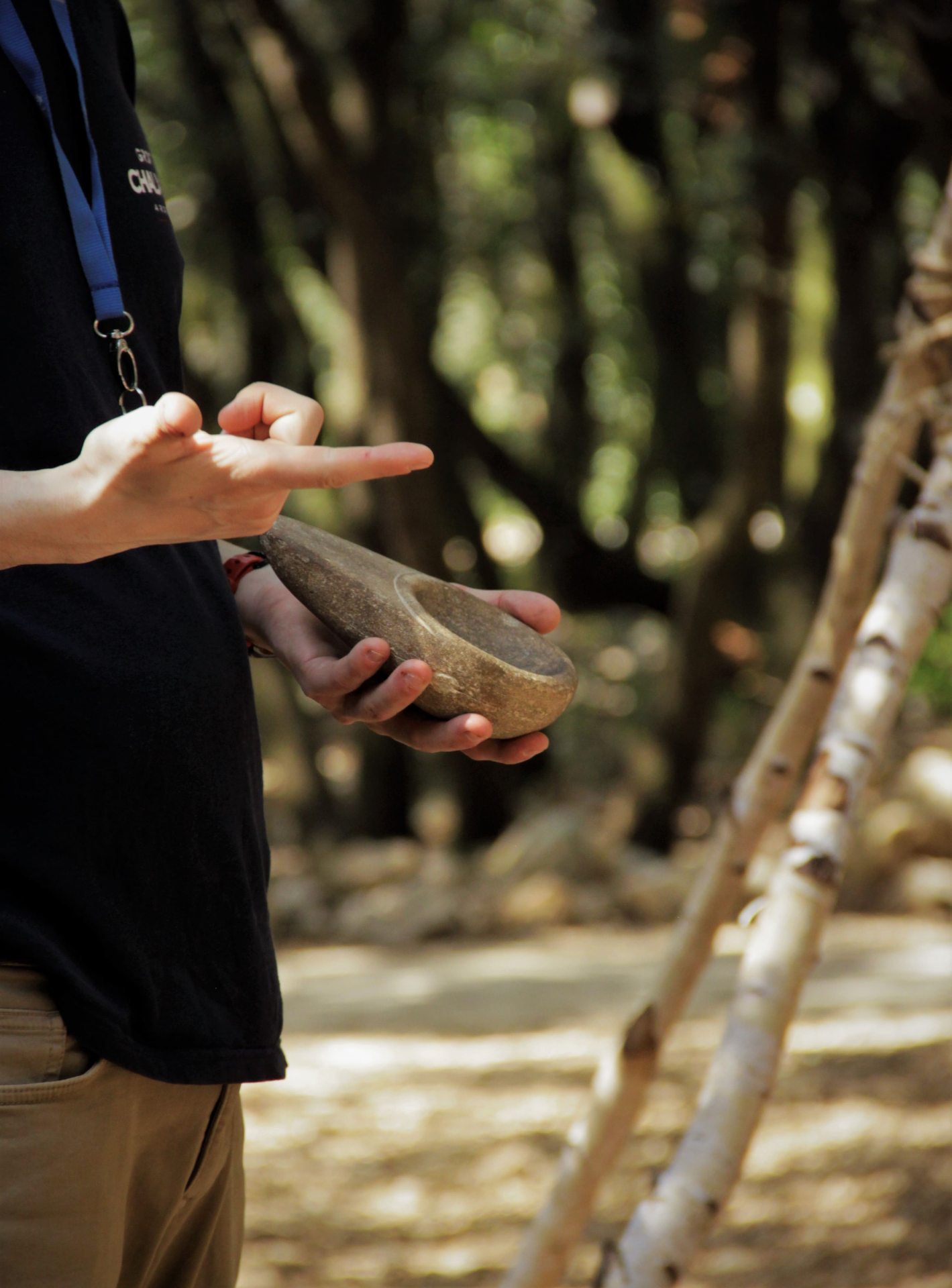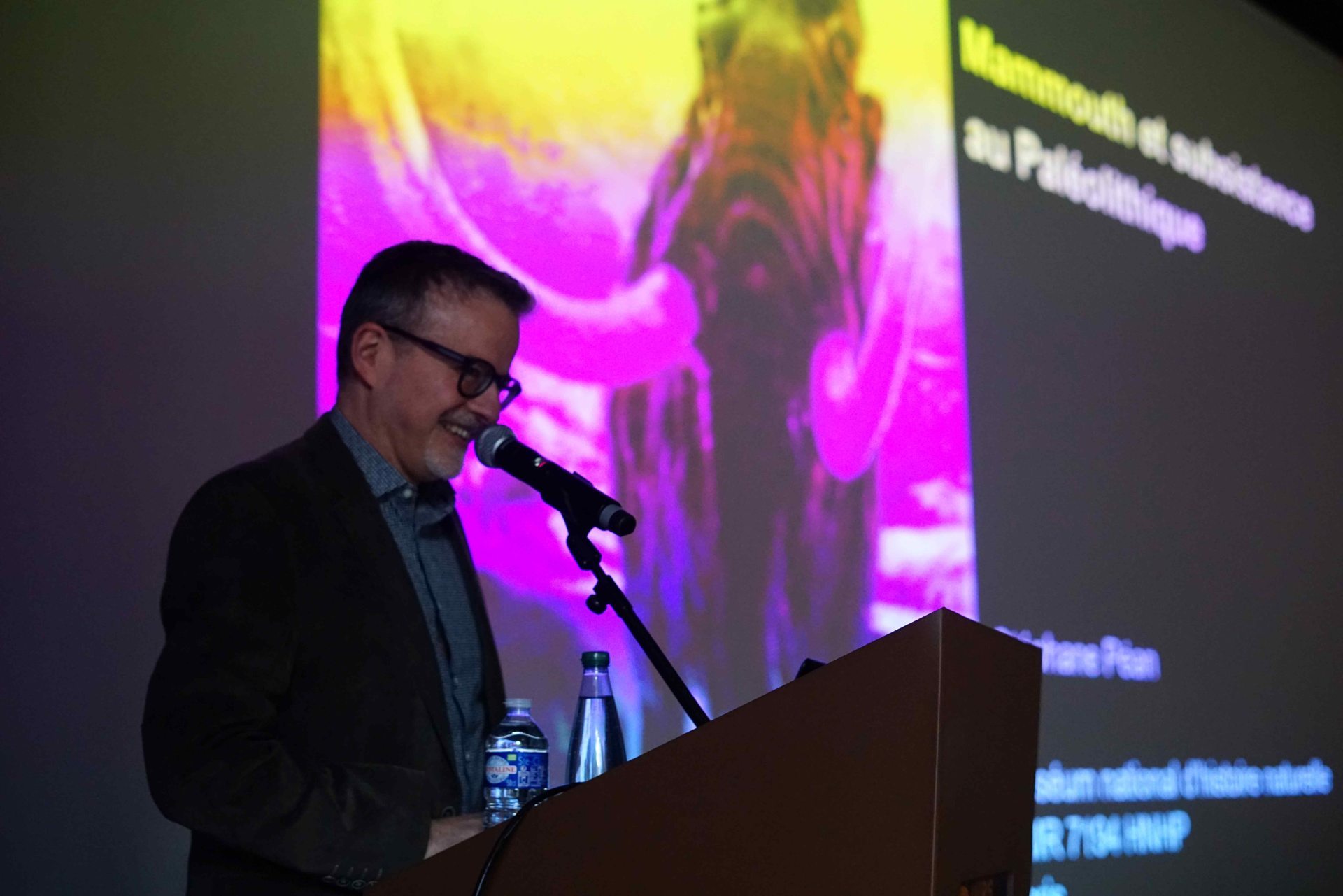Our mission : bringing culture and history to all
Bringing humanity’s first great masterpiece to the greatest number possible is both our mission and our privilege.
Several areas of our site host groups and visitors who participate in the activities run by our co-ordinators. Some of these areas are indoors, such as the replica cave, the school workshop areas, the conference centre and the one-of-a-kind workshop cave. Other activity areas are outdoors within the wooded park, such as the esplanade and the Palaeolithic camp.
All of our activities and workshops, whether visitors participate or observe demonstrations, have been developed to teach visitors about prehistory, the Aurignacians and art in a fun and educational way. The different types of activities (story-telling for younger children, mini-conferences, practical or theoretical workshops) mean that there is something for everyone who wants to enrich their knowledge.
The workshop cave
(open depending of the programmation)
A teaching tool
The aim of the workshop cave is to allow children to try out cave art techniques in the closest possible conditions to those of our ancestors.
This 90 m2 teaching area calls to mind the inside of a cave with its shapes, its surfaces and its textures.
The most important aspect of this teaching tool is its experimental approach. Visitors can try out drawing and painting techniques on the rocky wall surface with red ochre and charcoal, just like prehistoric artists.
Creating cave art with the family
The workshop cave is also open outside of term-time, so that different generations can enjoy creating art together. Painting on cave walls with all the family is a unique experience that the site’s co-ordinators offer during the school holidays.
After an introduction to cave art and an overview of other important sites (Lascaux, Altamira, Pech Merle, Rouffignac…), it’s the visitors’ turn to express themselves and reveal their talents as 21st century Homo sapiens!
The Palaeolithic camp
(open depending of the programmation)
Immersion in a prehistoric habitat
The Palaeolithic camp is situated next to the Aurignacian Gallery, in the shade of the holm oak forest. Either before or after the more spiritual experience of the cave tour, you can visit the camp to immerse yourself in the everyday life and the skills of hunter-gatherers who existed 36,000 years ago.
Depending on the time of year, you will be invited to wander around the huge tent prototypes made of animal hide and pinewood frames. These constructions are a indicator of what our prehistoric ancestors’ habitat could have looked like. Circular, conical tents reminiscent of tepees can be seen at certain archaeological sites. Being easy to put up and take down, they were particularly suitable for the nomadic lifestyle of men and women from the Aurignacian culture.
A place for learning through play
Depending on the time of year, our culture co-ordinators will run themed workshops. Will they maybe teach you how to light a fire without a lighter or a match? Or perhaps they will tell you about the Venuses, those enigmatic female statuettes that were discovered all over Europe, from Spain to the Ural mountains? Unless, of course, they decide to show you tattoo designs, jewellery and other treasures from the Upper Palaeolithic period! Maybe you will get a chance to hear the sound of the bullroarer and the conch in the music workshop…
During the warm summer weather, a spot-the-diffference stroll around the tents will be the opportunity for the most observant visitors to find the anomalies in the camp which seems, at a first glance, to be such a faithful reproduction of a Palaeolithic one. Our co-ordinators will be on hand to guide and join in with you, and to identify and explain what is out of place.
Feel free to take advantage of the prehistoric backdrop to take a few family selfies, then decide whether you want to go round to the esplanade to take part in an outdoor activity such as assegai spear-throwing, or if you would prefer to shelter from the sun in the Aurignacian Gallery.
School workshop areas
(open depending of the programmation)
The Lion, Owl and Bear rooms
The school workshop areas (called the Lion, Owl and Bear rooms) are reserved for school groups, except for during school holidays and certain weekends, when family activities can be held there. The walls were decorated by our culture team, to create a cosy atmosphere that would fit in with the prehistoric activities (telling the story of “Naly and the secret of fire”, music, sculpture…).
The conference centre
The conference centre is located next to the Aurignacian Gallery. It contains the Megaloceros amphitheatre, a huge 260 m2 room with space for 240 seated guests, or 813 standing ones. The comfortable grandstand seating is retractable.
You go in via a cosy entrance hall with a bar area, after which you can choose to access the main amphitheatre or one of the two breakout rooms, which are fully-equipped for both private events and our own meetings and workshops.
This multifunctional space allows us to host premium events requiring an extra-large screen, such as conferences for groups who make the request; Stellarium stargazing sessions for our “Starry Beasts” evenings; contributions to national and international events such as European Heritage Days; or “A Taste of Prehistory” evenings with a conference and prehistoric buffet prepared by our head chef.




